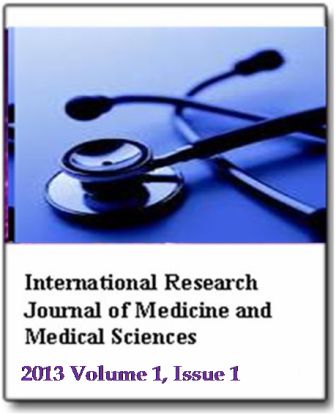Comparative study of dilatation and curettage, manual and electric vacuum aspiration as methods of treatment of early abortion in Beni Suef, Egypt
Mohamed Abd El GhafarInternational Research Journal of Medicine and Medical Sciences
Published: March 7 2013
Volume 1, Issue 1
Pages 43-50
Abstract
The aim of this study is to compare electric vacuum aspiration (EVA), manual vacuum aspiration (MVA) and uterine curettage (D&C) for first trimester abortions, in terms of the efficiency of eliminating ovular remnants, frequency of complications, duration of the procedure, and duration of patients' hospitalization. In a prospective study, 50 patients in EVA group, 50 patients in the MVA group and 50 in the D&C group were randomly included. Inclusion criteria were: spontaneous abortion, gestational age less than 12 weeks, patent cervix, endometrial thickness >15 mm, afebrile state, and hemoglobin >9 g/dl. Blood samples were collected before and after surgical procedures for control of hemoglobin levels. Anesthesia was performed in all cases. The time required for each surgical procedure was recorded. Groups were similar regarding gestational age and endometrial thickness before surgery. Durations of the procedure and of hospitalization were significantly shorter in the EVA and MVA group compared to the D&C group. EVA group showed the least incidence of complications regarding the amount of blood loss, uterine perforation and cervical laceration. Regarding the incomplete evacuation, both the EVA and MVA groups showed the same results. EVA caused less blood loss, was less time consuming, and resulted in shorter hospitalization.
Keywords: Abortion, electric vacuum aspirations, manual vacuum aspiration, dilatation and curettage.
Full Text PDF
